Aluminum pipe welding is a common process used to connect aluminum pipe fittings, widely applied in construction, automotive manufacturing, and HVAC systems.
While there are various methods for welding aluminum pipes, selecting the right technique ensures strong connections and helps prevent issues such as cracking and deformation.
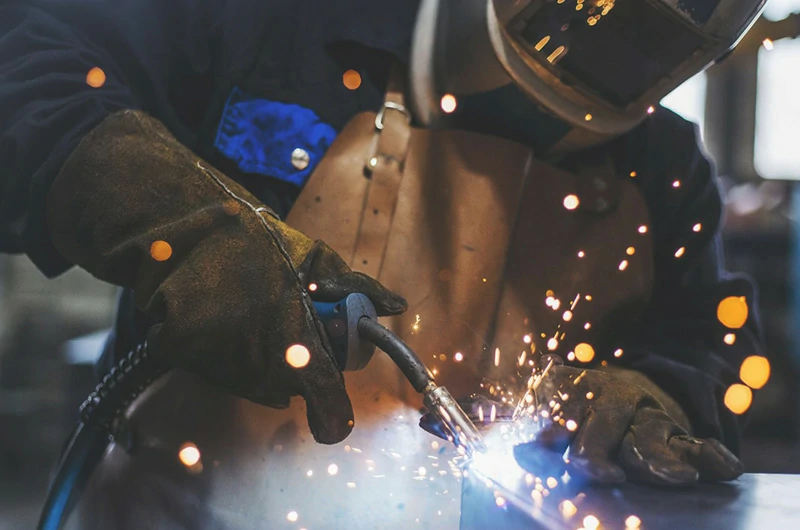
Preparation work before welding
- Surface cleaning: Remove the oxide layer, grease, and contaminants from the surface of the aluminum pipe to ensure welding quality.
- Welding material selection: Choose welding wire or rods that match the aluminum pipe material and use flux appropriately.
- Equipment and parameter setting: Check the welding equipment and adjust parameters such as welding current, voltage, and speed.
- Shielding gas preparation: Select the appropriate type and flow rate of shielding gas to prevent oxidation in the welding area.
- Preheating: Preheat thicker aluminum pipes to reduce thermal stress and welding deformation.
- Safety protection: Welders should wear protective gear to ensure safe operation.
Using TIG welding to weld aluminum pipes
TIG welding is a commonly used method for welding aluminum pipes. It employs a non-consumable tungsten electrode, with the welding wire manually fed into the weld pool. Inert gas, typically argon, is expelled from the welding torch to protect the arc and the welding area.
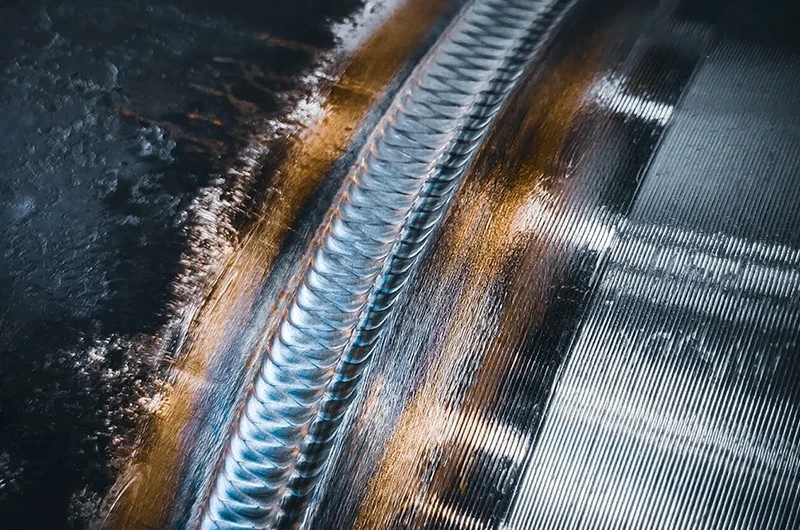
Features
- High weld quality: TIG welding produces high-quality welds with minimal oxide formation during the process, resulting in strong and aesthetically pleasing welds.
- Small heat-affected zone: The precise control of heat input in TIG welding reduces deformation and limits the extent of the heat-affected zone on aluminum pipes.
- Good operability: Welders can control the welding process by adjusting current and welding speed, allowing for adaptation to different thicknesses and sizes of aluminum pipes.
Applicable scenarios
Applicable to welding thin-walled aluminum pipes and scenarios requiring high-quality welds, such as aerospace and precision instruments.
Precautions
When performing TIG welding, use a direct current power source and select the appropriate welding current and voltage.
Maintain a stable welding torch and ensure a consistent welding speed to ensure the quality of the weld..
Using MIG welding to weld aluminum pipes
MIG welding uses a continuously fed wire electrode and employs inert gases (such as argon or helium) as shielding gases during the welding process. As the electrode melts, the shielding gas is expelled from the welding torch nozzle, covering the welding area and preventing oxidation.
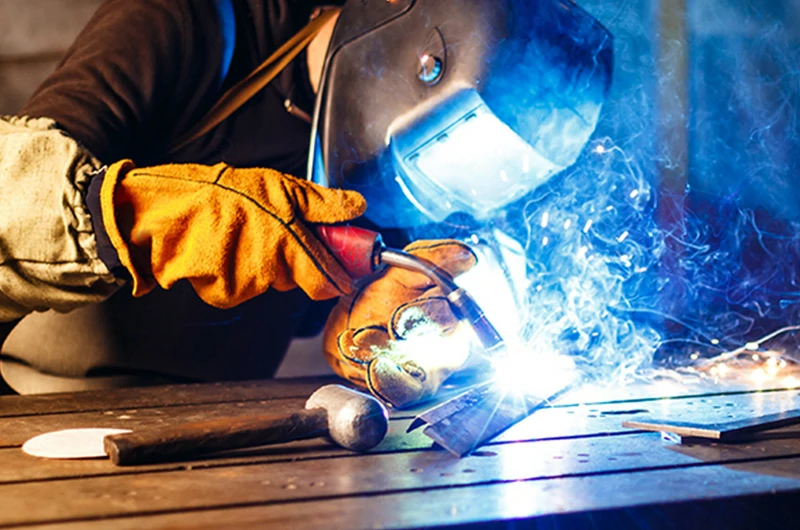
Features
- High welding speed: MIG welding uses a continuously fed wire electrode, allowing for higher welding speeds, making it particularly suitable for large-area or long-distance welding tasks.
- High weld quality: MIG welding can produce smooth, porosity-free, high-quality welds.
- High degree of automation: MIG welding is easily integrated with automation equipment, making it suitable for use on industrial production lines, thus improving welding consistency and production efficiency.
- Lower operation difficulty: Compared to TIG welding, MIG welding is relatively simpler to operate.
Applicable scenarios
- MIG welding is particularly suitable for welding thicker aluminum pipes because it can provide enough heat to melt the material and form a strong weld.
- Occasions where high-efficiency welding is required, such as automotive manufacturing, construction and other industries.
Precautions
- Aluminum welding wire is softer and can easily bend or get stuck in the feed tube.
- Adjust the appropriate current, voltage, and welding speed to match the thickness of the aluminum pipe and the welding position.
Friction stir welding
Friction stir welding (FSW) is a solid-state welding process that uses the frictional heat generated by a rotating tool at the material contact point to weld. It is suitable for welding aluminum and its alloys, especially aluminum tubes.
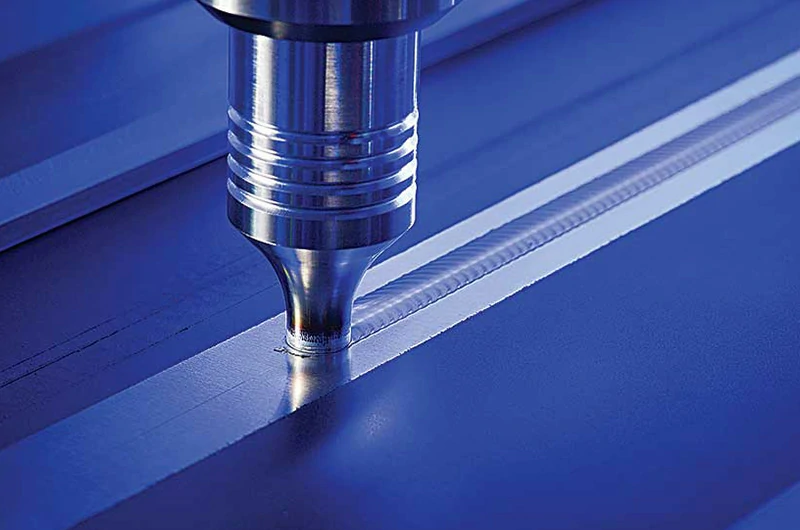
Features
- Low heat input: Friction stir welding uses a solid-state welding process, which generates low heat and reduces material deformation and residual stress.
- High weld quality: Since there is no melting process, the weld is dense and has no pores, ensuring excellent welding quality.
- Strength close to the parent material: The weld strength is high and close to the parent material strength, suitable for applications with high strength requirements.
- Environmentally friendly process: Since no welding materials and shielding gas are used, friction stir welding is an environmentally friendly welding method.
- Wide range of applications: It is suitable for welding aluminum tubes of different thicknesses, especially in the welding of thick-walled materials.
Applicable scenarios
- Friction stir welding can prevent aluminum tubes from oxidizing and deforming at high temperatures, and is suitable for applications with high requirements for welding deformation.
- Friction stir welding can provide high-strength, low-deformation welded joints, which are very suitable for pipeline transportation in the aerospace field.
- Precautions
- Choose welding tools suitable for aluminum, usually carbide stirring tips, and adjust their shape and size according to the thickness of the aluminum tube and welding requirements.
- Adjust welding parameters such as rotation speed, feed speed and pressure to ensure sufficient friction heat and stirring effect; improper parameters may result in incomplete penetration or insufficient strength of the weld.
Laser welding
Laser welding is a high energy density welding method that uses a laser beam to heat the welding area to achieve the connection of aluminum tubes.
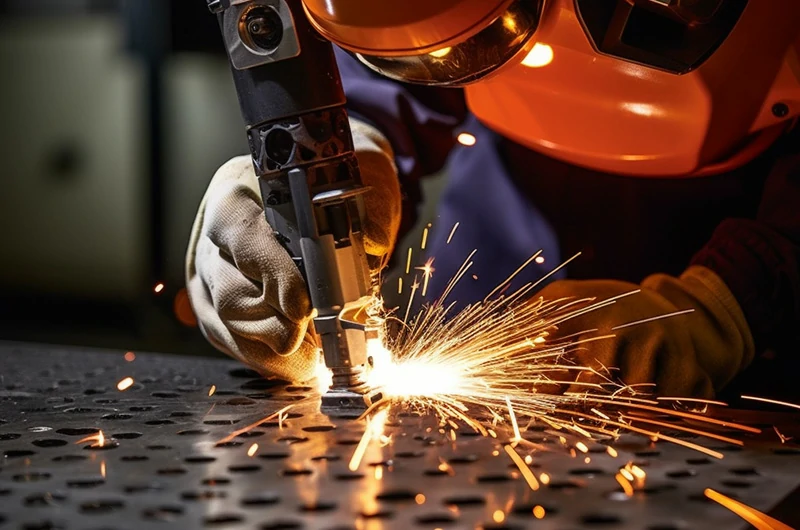
Features
- High welding accuracy: Laser welding has very high positioning accuracy and control capabilities, suitable for small and complex aluminum tube welding tasks.
- Excellent weld quality: Since laser welding provides a concentrated heat source, the weld is usually smooth, uniform, and has few defects.
- Small heat-affected zone: The heat input of laser welding is concentrated, which reduces the heat-affected zone, thereby reducing the deformation and stress of the material.
- Fast welding speed: Laser welding has a fast speed and is suitable for high-efficiency mass production.
Applicable scenarios
- Laser welding can achieve high-speed welding and a smaller heat-affected zone, and is suitable for occasions with high requirements for welding speed and heat-affected zone.
- Occasions requiring precision welding.

